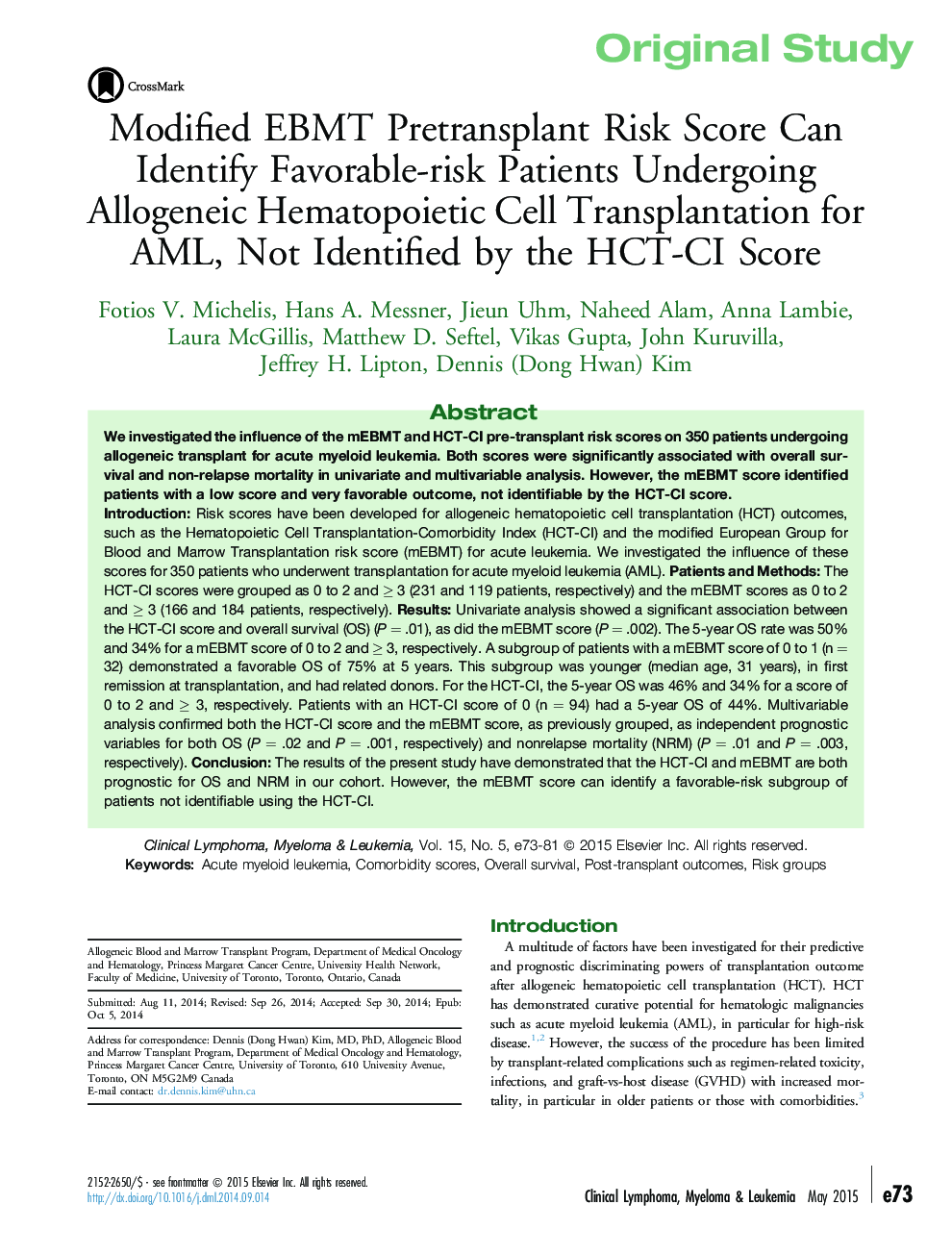| Article ID | Journal | Published Year | Pages | File Type |
|---|---|---|---|---|
| 2754389 | Clinical Lymphoma Myeloma and Leukemia | 2015 | 9 Pages |
IntroductionRisk scores have been developed for allogeneic hematopoietic cell transplantation (HCT) outcomes, such as the Hematopoietic Cell Transplantation-Comorbidity Index (HCT-CI) and the modified European Group for Blood and Marrow Transplantation risk score (mEBMT) for acute leukemia. We investigated the influence of these scores for 350 patients who underwent transplantation for acute myeloid leukemia (AML).Patients and MethodsThe HCT-CI scores were grouped as 0 to 2 and ≥ 3 (231 and 119 patients, respectively) and the mEBMT scores as 0 to 2 and ≥ 3 (166 and 184 patients, respectively).ResultsUnivariate analysis showed a significant association between the HCT-CI score and overall survival (OS) (P = .01), as did the mEBMT score (P = .002). The 5-year OS rate was 50% and 34% for a mEBMT score of 0 to 2 and ≥ 3, respectively. A subgroup of patients with a mEBMT score of 0 to 1 (n = 32) demonstrated a favorable OS of 75% at 5 years. This subgroup was younger (median age, 31 years), in first remission at transplantation, and had related donors. For the HCT-CI, the 5-year OS was 46% and 34% for a score of 0 to 2 and ≥ 3, respectively. Patients with an HCT-CI score of 0 (n = 94) had a 5-year OS of 44%. Multivariable analysis confirmed both the HCT-CI score and the mEBMT score, as previously grouped, as independent prognostic variables for both OS (P = .02 and P = .001, respectively) and nonrelapse mortality (NRM) (P = .01 and P = .003, respectively).ConclusionThe results of the present study have demonstrated that the HCT-CI and mEBMT are both prognostic for OS and NRM in our cohort. However, the mEBMT score can identify a favorable-risk subgroup of patients not identifiable using the HCT-CI.
